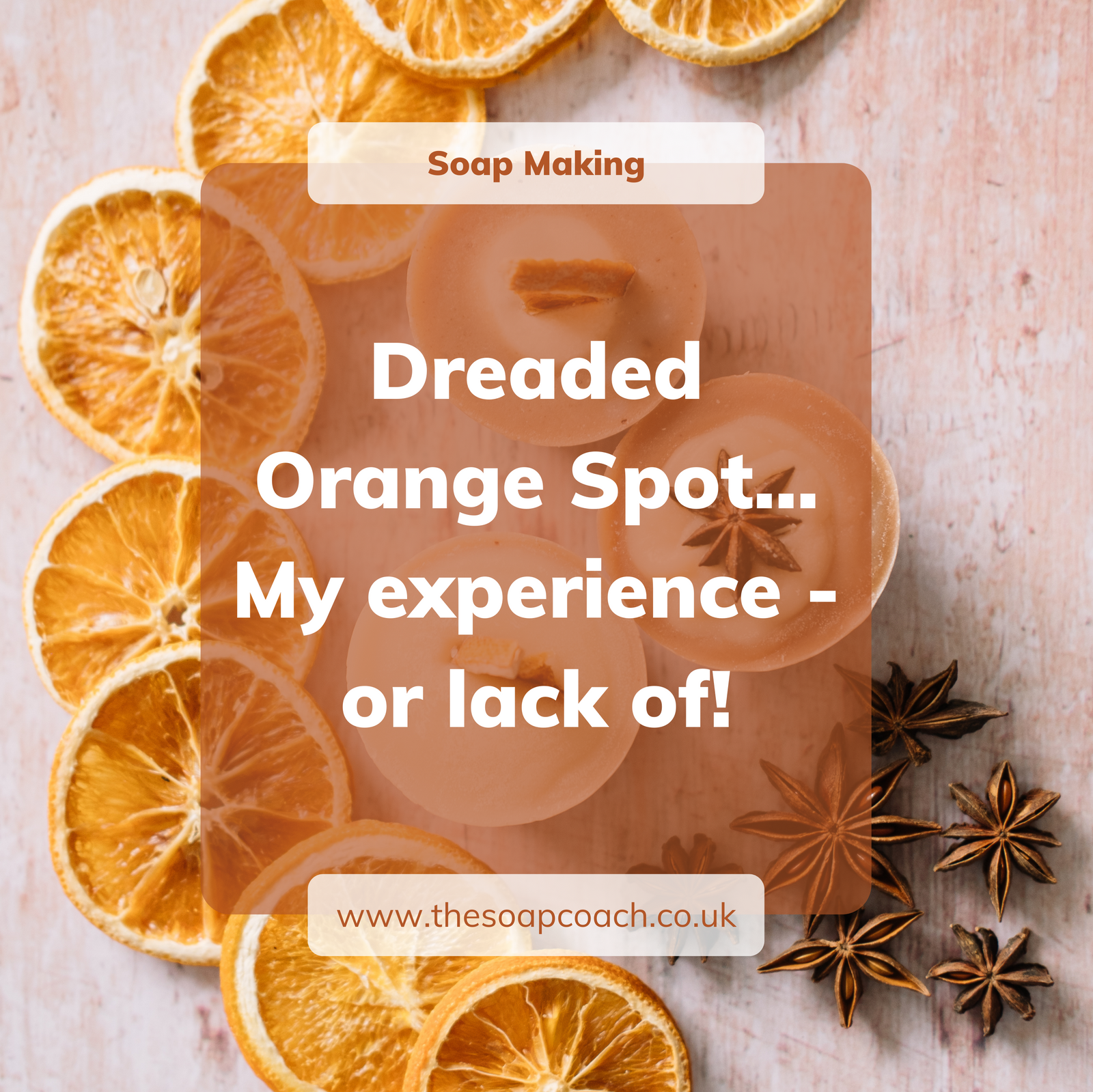Dreaded Orange Spot - My experience - or lack of!

If you decide to embark on soap making in a big way you will no doubt end up in various soap making facebook groups and the such like and I highly recommend that you do join them - there are some amazing people and so much knowledge. Yes I know a fair bit but I am always learning too! Which leads me nicely on to 'Dreaded Orange Spot' a term I have heard on numerous occasions and I know what it is but I have NEVER seen it !!!!! No really - in all the thousands of bars of soap I have made - never! Which baffles me slightly as it would appear to be quite common!
I can't even show you a photograph of it as I can't find a stock image - but if you imagine what soap with rust spots would look like you will have a good idea.
So how do I avoid dreaded orange spot! If I am honest I don't know. There are a few theories around what causes it, the main one being that the butters or oils in the soap going rancid.
It is important to be aware of your use by dates on the ingredients you use. Your soap generally has around 5% of oils 'free floating' ie not turned in to soap. These can and will go rancid in a soap bar that is sat around for months. Be aware that some ingredients have a shorter shelf life than others. For example coconut oil has a great shelf life at up to 24 months (providing it is not old stock when you buy it). Avocado oil has a shelf life of around 12 months - when kept in the fridge. Cocoa butter is 2 to 5 years, but you need to be aware that this depends on when you buy it. I stress that fact as I ordered some cocoa butter last week and received it on Saturday but the shelf life is May 2020. Now I am not too concerned as it will be used within the next few weeks and it is for my workshops - not for soaps that I will be making and selling commercially that could well be sat around for a few months or more but it illustrates my point perfectly, you cannot just assume the shelf life of a product is 12 or 24 months etc.
Water - Bottled? Distilled? Tap? If you look on all the blogs from soap makers about water they will all say you must use distilled water due to the risk of impurities, heavy in minerals etc - they all increase the risk of DOS. And I completely understand why they say that, it makes perfect sense. But I am going to dare to stand out from the crowd here - I started off using bottled water, spring water( although never distilled water) but it pained me greatly. Part of the reason I make soap is to reduce plastic bottles. I decided to try tap water and see what happened. Initially on soap I made as testers and for myself. Guess what - nothing happened. No DOS. I thought maybe as I mainly hot process my soap that was the reason why but I tried tap water with cold process soap last year - I still have bars of that soap lying around - no DOS. I now use tap water in all of my soap making workshops and fully intend to continue - I am sure there will be other soap makers out there who find this truly horrifying but I just cannot justify adding to the mountains of plastic bottles already out there for no good reason that I have experienced.

Maybe at some point this will backfire on me but for now I am comfortable with this decision and my reasons behind it. I am happier being as environmentally friendly as I can in my soap making and I feel I am being true to my own values even if it is not the 'right' thing to be doing!
What you choose to do is of course, entirely up to you but I do feel it is important to have a balanced view point and to take in to account all factors when making that decision. If you would like to learn to make your own soap I offer both hands on soap making workshops here in Dorset or why not consider my Soap Making Made Easy eBook which comes with the benefit of support from me via a private soap making facebook group.
Leave a comment